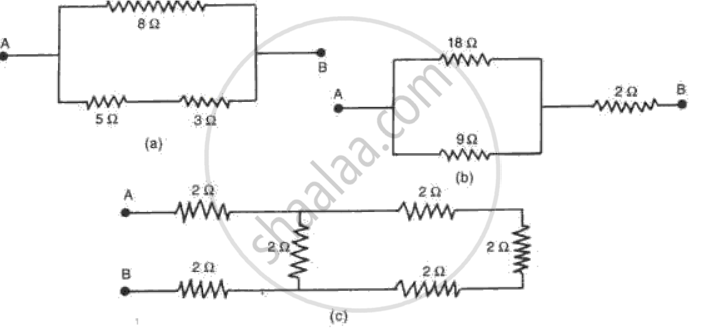Advertisements
Advertisements
Question
Two bulbs are marked 100 W, 220 V and 60 W, 110 V. Calculate the ratio of their resistances.
Solution
Given Ist Bulb
P1 = 100 W
V1 = 220 V
IInd Bulb
P2 = 60 W
V2 = 110V
We know P = `"V"^2/"R"`
So R = `"V"^2/"P"`
So `"R"_1/"R"_2 = ("V"_1^2/"P"_1)/("V"_2^2/"P"_2)`
`= ("V"_1^2 xx "P"_2)/("P"_1 xx "V"_2^2)`
`= (220^2 xx 60)/(100 xx 110 xx 110) = 2.4`
APPEARS IN
RELATED QUESTIONS
What is the SI unit of potential difference?
Calculate the work done in moving a charge of 4 coulombs from a point at 220 volts to another point at 230 volts.
Write down the formula which states the relation between potential difference, current, and resistance.
In the circuit shown below:

The potential difference across the 3 Ω resistor is:
Three electric cells of potential difference 1.5 V each have been connected as a battery. The potential differences of the battery will be ____________ V.
What is the combined resistance of each of the networks between A and B shown in fig. ?

Potential near a charge is the measure of its ______ to bring a positive charge at that point.
Find out the following in the electric circuit given in Figure
- Effective resistance of two 8 Ω resistors in the combination
- Current flowing through 4 Ω resistor
- Potential difference across 4 Ω resistance
- Power dissipated in 4 Ω resistor
- Difference in ammeter readings, if any.

A negative charge will move from ______ to ______ potential.
